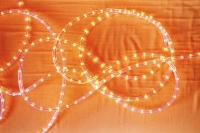Which light bulb do I use?
By Catalogs Editorial Staff

Which light bulb do I use is a common question because there are many choices
It used to be you walked into a store, grabbed a light bulb based on its wattage (e.g., 40 watt or 100 watt) and got the heck out of there. Nowadays, there are endless options when it comes to choosing bulbs. There are those that last longer, are more energy efficient and environmentally, which may be you choice. Which light bulb do I use?
Compact fluorescent light bulbs (CFLs) utilize less energy and save the homeowner money over time. Think efficient. Far less economical is their forerunner the incandescent bulb. But do the CLFs produce the type of illumination you want for your home or office?
Fluorescent versus incandescent
There is a distinct difference between fluorescent and incandescent bulbs. Fluorescent creates light by sending an electrical discharge through ionized gas whereas incandescent creates illumination by heating up the filament in the bulb.
The disadvantage of fluorescent is the time it takes to achieve brightness compared to an incandescent. CFLs also contain mercury, an environmental concern.
On the flip side, incandescent requires four to eight times as much power as a CFL to produce the same amount of glow and their lifespan is short compared to the CFL.
Some people prefer incandescent because it produces a warm, sunny glow as opposed to the white glow produced by CFL. Incandescent gets hotter than CFLs but are cheaper.
LED
Another option is LED or light emitting diode. This is a very efficient bulb, a friend of the environment and long-lasting. LED flow is different from traditional incandescent. It is far more versatile and can be used in different shapes.
The perks of using LED include low radiated heat, long source life, easily programmed and controlled, low voltage and current requirements, high level intensity and brightness, resistance to vibration and shock and no UV rays.
Color
Once you have decided on the bulb, decide upon the color. There is soft white, bright white and even amber and pink as well as other beautiful hues that make a tremendous difference in the ambiance of your home’s interior. Pink flatters everyone, and amber is very romantic.
Illuminate the the kitchen
People spend a tremendous amount of time in the kitchen. It is the gathering place in most homes. A variety of activities, aside from cooking and eating, take place in this room. It needs to be well-lit and accommodate these various activities. Ambient-, task- and accent luminosity are required in this area of the home.
Ambient lighting is provided via track fixtures,. chandeliers, wall sconces, a ceiling fan with a light, recessed fixtures and various other ceiling fixtures.
Provide task luminosity for areas where homework is done and hobbies pursued using under-counter fixtures, pendants hung over the island, desk and table lamps and recessed or track bulbs aimed as a precise spot in the room.
Accent (mood) lighting shows off areas in the home the homeowner wants to showcase, including an antique China cabinet and its contents or a beautiful portrait on the wall. Niche luminosity is achieved via canned or up-lighting that focus on an area the homeowner chooses to emphasize.
Put rope fixtures under kitchen cabinets to add coziness and warmth. This looks pretty as well as provide illumination for the counter tops.
Decide what kind of bulb you want to use and then proceed.
~
What purpose does the light serve and where will it be located?
Exterior and landscape types of illumination have come a long way, baby. Choose from path or hanging fixtures, illuminate the front and back stairs, which prevents falls as well as looks attractive, add porch and security illumination. Adding outdoor lights to a property lessens the chance the residence is burglarized. This is a very affordable and effective security measure. It also looks pretty and increases the beauty and value of your home and property.
Popular Savings Offers


.png)
.png)
.png)




.jpg)

